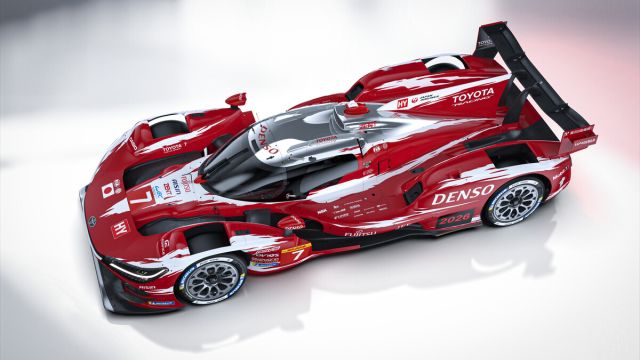‘Huge milestone’: Garage 56 Le Mans project enters next phase with VIR test
The Hendrick Motorsports-built Garage 56 Chevrolet Camaro ZL1 tester debuted Monday at Virginia International Raceway, marking only the program’s second on-track session ahead of a proposed special appearance in the 24 Hours of Le Mans next June.
The troubleshooting process sent the assembled crowds of crew and support personnel scrambling at times, but there were encouraging signs found among the challenges. The track time inched the project another step closer to a potential exhibition entry in the 2023 endurance classic, but also offered a reminder of how early in the process the car’s launch still is.
“No, it’s definitely an infant,” said Chad Knaus, Hendrick Motorsports VP of Competition. “So we’re still trying to get it to go and honestly, the way it ran today, I’m actually pleased with the performance of the car. We’ve just got to start to work out some of the bugs.”
Sports-car veteran Mike Rockenfeller, a former Le Mans overall winner, was again behind the wheel of the test car. The German road-racing ace also drove in a previous Garage 56 test, wheeling a Camaro prepared by IMSA team Action Express Racing at Road Atlanta on Aug. 29-30.
This entry, Knaus said, is a closer representation of what the actual Le Mans racer might be when it hits the French countryside, with significant updates to the chassis, engine and suspension components, plus the addition of side-view mirrors. Among the most visible changes were the aerodynamic pieces, with the addition of stabilizing dive planes and a more robust splitter and diffuser – an indication of the loose leash that the Garage 56 team will have with the specifications as it builds off the Next Gen template.
“It’s definitely a big step. I mean, we have … where do I start?” Rockenfeller said after wrapping up his day’s work of hustling the car around the 3.27-mile VIR full-course layout. “We have less weight, we have a bit more downforce. Tires are the same, because we did (initial) tire testing in Atlanta, so similar-ish. Power is a bit different, so we increased a little bit there as well in that area, Now we have paddle-shift, we have traction control in, we have a new dash. I mean, everything is different, basically. So we are pretty close to what we think will be the race car in Le Mans. But of course, it’s still a very long way to go.
“We will improve in pace and reliability, definitely. So I would say that’s the difference. Between the current Cup car, and this test car, again, it’s pretty similar, I would say, its weight, its power, its tire grip – it’s just a lot faster. I mean, to give you a figure, around here, I think we are around 10 seconds faster than what I did in a Cup car, so it’s quite a lot faster.”
Reaching that speed Monday took effort all around. An “electrical gremlin” that Knaus chalked up to a faulty power distribution module prevented the test car from making a sustained run during the morning hours. Afternoon testing was stopped early, just before sundown, by a fuel-pump issue that the crew worked on into the evening hours.
That drew the attention of the attending representatives – from Hendrick, Goodyear, NASCAR and Bosch among others – to jump in and lend a hand with remedies.
“I think it’s a huge milestone for us. It doesn’t go without its challenges, of course, but that’s why you come to the race track to test,” Knaus said. “But I think with all the people here and all the resources that have been here at VIR today, it shows the importance of this program, and what a big commitment it has been for everybody.”
More testing was planned for Tuesday at the scenic Virginia road course, as Rockenfeller put the car through its paces in the morning with significant rain in the forecast for later. But a course has already been charted for what’s next in the project’s development – both in performance and endurance.
“Well, this is a first step and over the course of the next six months or so there’s going to be a huge amount of iterations,” Knaus said. “Obviously, always trying to get yourself more margin from a pace standpoint, so we want to continue to try to push and make the car faster from a weight and performance standpoint.
Downforce, get some more aero efficiencies put into the car, Goodyear has done a really good job of starting to get some construction and compound combinations put together, and we’ll start to get that really rolled up into what the tire is going to be. So an awful lot of work from this point forward.”






Comments
Log in to comment the article